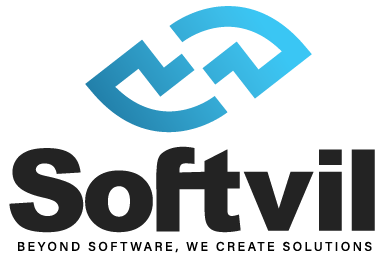Software test case documentation is a critical aspect of quality assurance in the software development process. It enables a systematic approach to planning, executing, and evaluating tests, ensuring the delivery of reliable and bug-free software. However, traditional approaches to test case documentation often pose challenges, including inefficiency and maintenance difficulties. To address these issues, adopting best practices and strategies is crucial. In this article, in collaboration with Softvil Technologies, a leading software development company, we will explore the importance of test case documentation, discuss the challenges faced with traditional methods, and provide valuable insights into the best practices and strategies to optimize the test case documentation process.
The Purpose and Benefits of Test Case Documentation
Test case documentation serves a crucial role in software testing by providing a systematic and organized approach to ensuring software quality. It outlines the specific steps and conditions to be tested, the expected results, and any additional information necessary for accurate execution.
One of the primary benefits of well-documented test cases is improved test coverage. Clear and comprehensive documentation helps testers identify various scenarios and ensure that all critical aspects of the software are thoroughly tested. It also enables traceability, allowing stakeholders to understand which requirements or user stories have been covered by the tests, thereby ensuring that the software meets the desired specifications. Another advantage of test case documentation is reusability. Well-documented test cases can be reused in future testing cycles or for similar projects, saving time and effort. By maintaining a repository of reusable test cases, organizations can streamline their testing processes and achieve greater efficiency.
Furthermore, test case documentation plays a vital role in facilitating collaboration among team members. It provides a common understanding of the testing requirements and expectations, allowing testers, developers, and stakeholders to work together effectively. Clear documentation enables better communication, reduces misunderstandings, and promotes alignment within the team. By prioritizing test case documentation, businesses can enhance the overall quality of their software, minimize risks, and improve customer satisfaction. In the following sections, we will explore the best practices and strategies to streamline the process of creating and maintaining test case documentation, ensuring its effectiveness and value in the software testing lifecycle.
Essential Elements of Effective Test Case Documentation
Effective test case documentation consists of several essential elements that ensure clarity, consistency, and comprehensive coverage of software testing. By including these key components, testers can create documentation that is easy to understand, follow, and maintain.
The first crucial element is the test objectives. Clearly defining the objectives helps testers understand the purpose and goals of each test case. This allows them to align their efforts with the desired outcomes and ensures that the testing process remains focused. Preconditions are another important component. These specify the initial state or setup required before executing the test case. Predefined preconditions help create a consistent testing environment and ensure that the software is tested under the intended conditions.
The steps section outlines the specific actions to be performed during the test execution. Each step should be written in a clear, concise, and unambiguous manner to avoid confusion and promote accurate execution. It is also beneficial to use standardized templates and naming conventions for consistency and easier maintenance of the documentation. Expected results provide a clear indication of what the outcome should be after executing the test case. It is important to define the expected results accurately to evaluate whether the software functions as intended. These results should be measurable, observable, and specific, allowing for easy comparison with the actual results.
Postconditions specify the state of the software and the environment after the test case has been executed. Including postconditions helps ensure that the software returns to a known state and prepares it for subsequent test cases. In addition to these components, effective test case documentation should provide relevant input data and expected outputs. This includes specific values, boundary conditions, and test data necessary to achieve comprehensive test coverage. By incorporating a range of inputs and expected outputs, testers can verify the behavior of the software under different scenarios and identify potential issues or defects. By including these essential elements in test case documentation, testers can ensure that the testing process is well-documented, consistent, and thorough. In the next section, we will explore additional best practices for creating effective test case documentation.
Organizing and Structuring Test Cases
When it comes to organizing and structuring test cases, there are various approaches that can be adopted to ensure efficiency and effectiveness in the testing process. One approach is to use test suites, which are logical groupings of related test cases. Test suites help organize test cases based on specific criteria, such as functional areas, modules, or business processes. This allows for better manageability and ease of execution, as testers can focus on specific areas or functionalities during testing. Another approach is to establish a test case hierarchy. This involves creating a structured framework where test cases are categorized and grouped in a hierarchical manner. Test case hierarchies can be based on factors like modules, features, or priority levels. This enables testers to prioritize their testing efforts, identify critical areas, and ensure comprehensive coverage across different levels of the software.
Test case management tools can also be employed to organize and structure test cases effectively. These tools provide features such as test case repositories, version control, and test case traceability, making it easier to manage and track test cases throughout the testing lifecycle. Test case management tools offer the advantage of centralized storage, collaboration, and reporting capabilities, enhancing overall efficiency and productivity. Categorizing test cases based on modules, functionalities, or priority levels brings several benefits. It allows for focused testing within specific areas, ensures that critical functionalities receive adequate attention, and helps prioritize testing efforts based on business priorities or risk factors. Additionally, organizing test cases in this manner enables easier maintenance, updates, and reusability, as changes or enhancements can be targeted to specific modules or functionalities.
Maintaining a well-organized test case repository is crucial for the efficient navigation and management of test cases. A well-structured repository enables testers to quickly locate and access relevant test cases, reducing time spent on searching and improving overall productivity. It also facilitates collaboration among team members, as everyone can easily locate and work on the appropriate test cases.
Maintaining Test Case Documentation

Maintaining test case documentation is a crucial aspect of the software testing process. It ensures that the documentation remains accurate, relevant, and aligned with the evolving requirements and changes in the software. Keeping test case documentation up to date throughout the software development lifecycle is essential for several reasons. Firstly, as requirements change or new features are added, test case documentation needs to reflect these updates. By keeping the documentation current, testers can ensure that they are testing the latest functionalities and scenarios, reducing the risk of overlooking critical areas.
Managing changes in requirements requires a proactive approach. Testers need to review and update test cases accordingly to align them with the modified requirements. This may involve adding new test cases, modifying existing ones, or removing obsolete ones. Strategies such as regular communication with stakeholders, conducting impact analysis, and maintaining a change log can help effectively manage changes and their impact on test case documentation. Version control systems play a vital role in maintaining consistency and tracking changes in test case documentation. These systems enable testers to manage different versions of test cases, track modifications, and revert to previous versions if needed. Collaboration tools also contribute to maintaining test case documentation by providing a platform for team members to collaborate, share feedback, and make updates collaboratively. This ensures that everyone involved in the testing process is working with the most recent and accurate test case documentation.
Consistency and accuracy in test case documentation are crucial for effective testing. It helps testers avoid confusion, ensures proper coverage of test scenarios, and facilitates knowledge transfer among team members. By actively maintaining and updating test case documentation, organizations can enhance the overall quality of their software products and streamline the testing process.
Wrapping it up
In conclusion, effective test case documentation is crucial for quality assurance in software development. Softvil Technologies understands its significance and can assist businesses in achieving their testing objectives. By implementing best practices and strategies, teams can improve testing processes and software quality. With expertise in clear documentation, standardized templates, and organized test cases, Softvil ensures up-to-date and accurate information. By partnering with Softvil, businesses can optimize their testing practices and deliver exceptional software products. Trust Softvil Technologies for streamlined test case documentation and successful quality assurance in software development.

